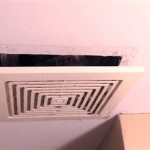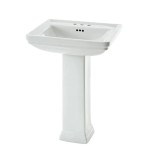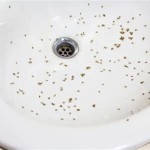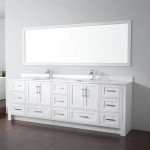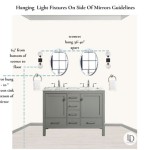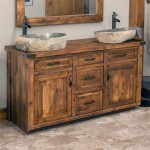Bathroom Sink Drain Types
The bathroom sink drain, a seemingly simple fixture, plays a crucial role in efficient water removal and overall bathroom hygiene. Understanding the different types of drain assemblies available allows for informed decisions during installation or replacement, ensuring compatibility and optimal performance.
Drain assemblies are categorized based on their construction, mechanism, and installation method. The most prevalent types include pop-up drains, grid drains, and lift and turn drains. Less common, but still relevant, options include click-clack drains, push-button drains, and toe-touch drains.
Pop-up Drains: Pop-up drains are widely used due to their convenient operation and sleek appearance. They feature a stopper that lifts and closes with a simple push. This mechanism relies on a pivot rod connected to a clevis strap, which lifts and lowers the stopper. The pivot rod is operated by a lever located behind the faucet. Pop-up drains are generally easy to install and maintain, making them a popular choice for most bathroom sinks.
Grid Drains: Grid drains offer a simple and reliable draining solution. They consist of a strainer with a grid pattern that allows water to pass through while preventing larger debris from entering the drain. Grid drains lack a stopper mechanism, which means they cannot hold water in the sink basin. Their simple design makes them less prone to clogs and easy to clean. Grid drains are often preferred in bathrooms where water retention is not a requirement, such as powder rooms.
Lift and Turn Drains: Lift and turn drains, also known as twist drains, operate by rotating a stopper to lift and seal the drain. The stopper is threaded onto a post within the drain assembly. Turning the stopper clockwise closes the drain, while turning it counterclockwise opens it. Lift and turn drains offer a secure seal and are relatively easy to operate. They are a durable and reliable option commonly found in older homes.
Click-Clack Drains: Click-clack drains function similarly to pop-up drains, but instead of a lever, they are operated by pressing down on the stopper itself. A single press closes the drain, and another press opens it. This mechanism eliminates the need for a pivot rod and lever, providing a cleaner look and simpler operation. Click-clack drains are a modern alternative to traditional pop-up drains.
Push-Button Drains: Push-button drains offer another convenient and hands-free operation. A button located on the top of the drain stopper controls the opening and closing mechanism. Pushing the button activates a spring-loaded mechanism that raises and lowers the stopper. Push-button drains are often found in higher-end bathroom fixtures.
Toe-Touch Drains: Toe-touch drains are designed for hands-free operation, enhancing convenience and hygiene. A small lever at the back of the drain is activated with a tap of the foot, opening and closing the drain. This feature eliminates the need to touch the drain with potentially dirty hands. Toe-touch drains are a more specialized option, typically found in upscale bathrooms.
Choosing the Right Drain Type: Selecting the appropriate drain type depends on several factors. Consider the style and functionality desired, the existing plumbing configuration, and the overall bathroom design. Pop-up drains are a versatile choice for most applications, while grid drains are suitable for situations where water retention is not necessary. Click-clack, push-button, and toe-touch drains offer increased convenience and a modern aesthetic.
Materials and Finishes: Bathroom sink drains are available in various materials and finishes to complement different bathroom styles. Common materials include brass, stainless steel, and plastic. Finishes range from polished chrome and brushed nickel to oil-rubbed bronze and matte black. Choosing a durable material and a finish that matches the existing fixtures ensures a cohesive and visually appealing bathroom design.
Installation and Maintenance: Proper installation is crucial for preventing leaks and ensuring optimal drain performance. While some drain types are easier to install than others, following the manufacturer's instructions is essential for any installation. Regular cleaning and maintenance help prevent clogs and ensure the longevity of the drain assembly. This may involve removing hair and debris from the strainer or using a drain cleaner to remove buildup.
Understanding the different types of bathroom sink drains enables homeowners and professionals to make informed decisions during installation or renovation projects. Considering factors such as functionality, style, and maintenance requirements helps ensure the selection of the most suitable drain type for any bathroom application.

Pop Up Lift Turn Pull Out Stopper Bathroom Sink Drains

Pop Up Lift Turn Pull Out Stopper Bathroom Sink Drains

11 Types Of Bathroom Sink Drains Both With And Without Overflow Guide For Kitchen Bath Fixtures Faucets

Full Size Bounce Bullet Type Sink Plug Stopper Anti Clogging Bathroom Faucet Drain With Filter Basket Pop Up Vessel Vanity Oil Rubbed Com

Pop Up Lift Turn Pull Out Stopper Bathroom Sink Drains

How To Replace A Drain In The Bathroom Sink Right Way

How To Install A Vessel Sink Faucet

Sink Drains Stoppers At Com

How Does A Sink Pop Up Mechanism Work

Universal Bathroom Sink Stopper Basin Pop Up Drain Filter Stainless Steel Push Type Bounce Core Converter Strainer Plug For 0 98 Hole Tools Temu
Related Posts
